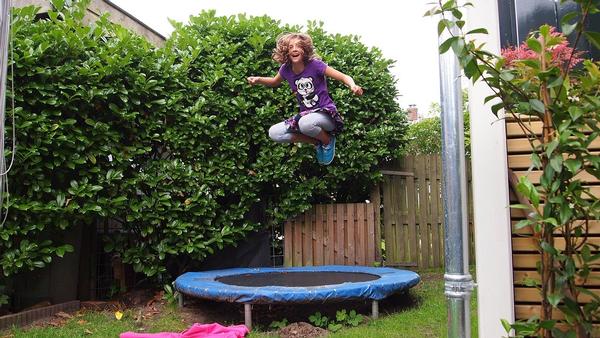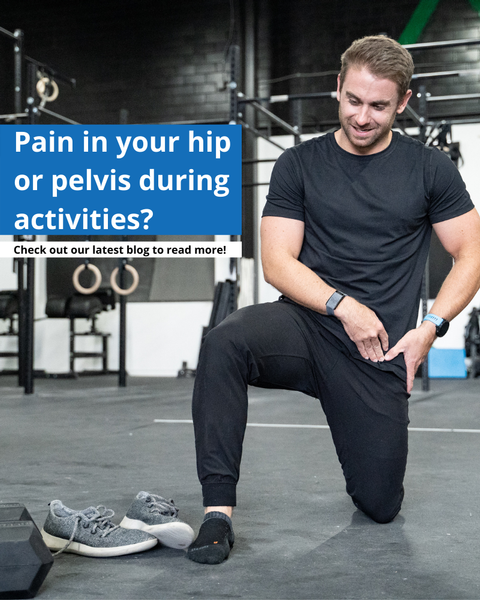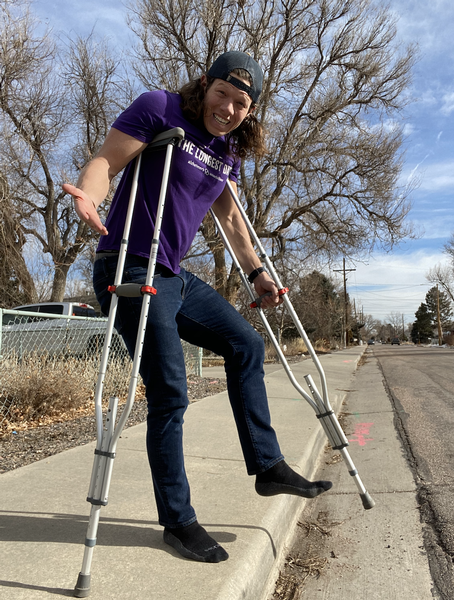Latest News & Blog
Easy Ways to Stick to Your Home Exercise Program So You Can Get Back to a Pain Free Life!
By Sarah Jorda - February 23, 2021
Whether it is work, family, lack of equipment, or space; it is common that patients have a hard time completing their HEP.
Research shows that patients who adhere to their prescribed HEP, are more likely to have positive outcomes throughout their rehabilitation process as well as following discharge. Please keep in mind the exercises prescribed by your physical therapist and adjust these tips accordingly.
Here are some simple tricks to completing your daily exercises.
- When you wake up and are still in bed, performing some gentle stretches can be an easy way to warm up your body for the day.
- Waiting for water to boil or coffee to brew, you can perform an exercise or two.
- While warming up food in a microwave or during commercial breaks on tv you can focus on activity tolerance and endurance with a timed exercise.
In addition to time constraints, another common reason for nonadherence to a home exercise program is not having the correct weights. Here are some common household items that can be used in place of weights.
A standard 16.9 oz bottle of water or an 8oz jar of spaghetti sauce weighs about 1 lb
Bags of rice can come in options of 1 lb, 2lb, 5lb, and 10 lbs
A gallon of milk weighs 8.6 lbs while a gallon of water weighs 8.3 lbs.
Learning how to use what you have available at home to continue to progress your HEP per your Physical Therapist’s instructions is key. Keep yourself actively involved in order to quickly get back to the activities you want to be able to do independently and pain-free.
What Do All Those Letters Behind Your Physical Therapist’s Name Mean?
By Sara Peterson - January 28, 2021
Alphabet Soup: What Do All Those Letters Behind Your Therapist’s Name Mean?
In the ever-changing profession of physical therapy, each provider continues their education through courses, classes, and certifications. Many of the letters following your therapist's name can give you insight into their continuing education and certifications and who can best serve your needs!
Below are some commonly seen abbreviations you may find behind your physical therapist’s name:
Â
PT – Physical Therapist
This designation means that your physical therapist has passed their national boards exam and are licensed to practice personalized patient care.
DPT/MPT – Doctor of Physical Therapy/Masters in Physical Therapy
This designation behind the physical therapist’s name tells you their educational degree. As of 2015, all physical therapy graduates are required to have a doctorate level education.
PTA – Physical Therapy Assistant
If you see this following your therapist’s name, it means that they are a physical therapy assistant. These individuals are skilled in patient care and treatment of a variety of health conditions and injuries. They work hand in hand with the physical therapist in collaboration with techniques to ensure the best quality of care for every patient.
ATC – Athletic Trainer Certified
If you see this following your therapist’s name, it means that they are certified as an athletic trainer. These individuals have a comprehensive knowledge of sports injuries. These providers play an important role in the prevention, treatment, and rehabilitation of a wide variety of injuries.
OCS – Orthopedic Clinical Specialist
If your physical therapist has the designation OCS, they are a board-certified specialist in orthopedic physical therapy. These therapists must meet a required number of patient care hours and pass a national exam to demonstrate competence in their chosen specialty – orthopedics. These physical therapists are skilled in their examination, evaluation, and hands-on techniques.
MTC – Manual Therapy Certification
If your physical therapist has the designation MTC, they are certified through the University of St. Augustine as a specialist in manual therapy techniques (myofascial release, mobilization, manipulation). With this certification, physical therapists are required to complete hours of training that include oral, practical, and written exams for each part of the body to demonstrate competency.
FDN – Functional Dry Needling
If your physical therapist has the designation FDN, they are certified in functional dry needling. This is a neurophysiological therapeutic technique that uses small acupuncture-like needles to target dysfunctional/tight muscle tissue or connective tissue. These physical therapists have a strong background in anatomy and physiology.
GTS – Graston Technique Specialist
If your physical therapist has the designation GTS, they are certified in Graston Technique. Graston Technique uses a combination of exercise and instrument-assisted manual techniques to decreased myofascial restriction and muscular tightness.
CSCS – Certified Strength and Conditioning Specialist
If your physical therapist has the designation CSCS, they are certified through the National Strength and Conditioning Association (NSCA) as a specialist in improving athletic performance. These individuals are highly skilled in developing safe strength and conditioning programs, while also providing guidance in injury prevention.
At Peak Physical Therapy we have you covered!
If you want to know more about how your physical therapist is broadening their knowledge and practice, please ask. We love sharing what we are learning and how we can apply our knowledge to your case so you can reach your PEAK!
How to Keep Your Kids Active When School Sports Get Cancelled According to Your Aurora Physical Therapy Team
January 27, 2021
Play Video Games
Ordinarily, video games aren’t the most active way to pass the time. Most players sit still during the entire gaming session, but that doesn’t mean you have to follow suit. You can easily turn your kids’ video game sessions into physically active and fun times each day. Play with them and, rather than sitting still, get up and move with the characters on the screen. If the character is running, jog in place. If they jump over an obstacle, jump up, too. Over the course of an entire gaming session, you and your kids will have moved around and gotten your heart rates up enough to count as at least a short workout.Â
Go for Evening Walks or Jogs
After a long day of both work and school, your entire family will likely feel a little stiff. Rather than spending the evening vegging out in front of the television, be active. When the weather is pleasant, start going for evening walks. Walk around the block at a brisk pace and if your kids start jogging, jog with them. This simple amount of physical activity can be enough to help you reach your fitness goals. At worst, you’ll work out the kinks and knots in your muscles and will help your kids burn off energy at the end of the day. Just make sure you’re dressing appropriately for the weather and are following local ordinances to help you and your family stay healthy and safe.
Pick up a New, Active Hobby
If you’re stuck at home, there’s no better time than the present to pick up a new hobby. Just make sure it’s an active one. Look for things you and your kids can learn to do together. Not sure where to start? These simple options are great ways to stay active:
- Juggling
- Dancing
- Hula Hooping
- Yoga
- Gardening
Think about what you and your family love doing most and find ways to expand your interests into more active pursuits. Remember, it’s okay if your new hobbies are challenging. Your mind can always use the workout, just like the rest of your body.
Talk to Your Kids’ Coaches About Zoom Practices
If your kids normally play on a school sports team or local community team but can’t right now, don’t give up. Talk to their coaches and see if they can arrange a video practice each week. During these sessions, your kids can run drills with their teammates without leaving the safety of your yard. Even better, your kids will feel like they got to hang out with their friends. This can go a long way toward helping you preserve a sense of normalcy in their lives.Â
Get Them to Take Recess Each Day…and Join Them
When your kids are at school, they typically get at least one recess period during the day. This allows them to burn off energy and helps them stay focused during their classes. When they’re stuck studying at home, making sure they take their recess breaks just like normal is essential. It helps get them up and moving every day. If you can, take a recess for yourself and go play outside with them. This will get you active and moving during the middle of your work shift and can help you burn a few extra calories each day.
Pick up Some Basic but Fun Exercise Equipment
When you think about exercise, you probably picture going to the gym or spending hours outside running on a track. In other words, you picture some of the most boring activities out there. All you need to do is invest in a little bit of exercise equipment that the entire family can use and enjoy. These include mini-trampolines or rebounders, jump ropes, bicycles, and punching bags. These are tools that the entire family can use to burn energy and get fit without the experience feeling like a boring workout.
Take Active Days Off
Just because you’re spending more time at home than usual doesn’t mean you have to stay at home on your days off. Start planning fun excursions with your family around the greater Denver area. There are dozens of hiking trails, lakes, rivers, and outdoor attractions that you can enjoy safely while also being active.Â
Have a Speed-Cleaning Challenge Once a Week
When you’re spending more time at home, it’s only natural that the house will get dirtier, faster. Instead of cleaning things once they build up, be proactive and active. Have your kids perform a speed cleaning challenge once a week. Whoever cleans their room fastest—up to your standards, of course—wins the right to choose a weekend activity or gets to pick dinner one night. You can even get in on the action by speed cleaning your office. Move as fast as you can while still doing a good job. You’ll get your heart rate up in no time!
Staying Fit Can Still Be Fun
Staying healthy and reducing your risk of needing physical therapy will improve your quality of life. But getting active doesn’t have to seem like a chore. You just need to think outside of the box. Keep these activities in mind and try them for yourself. They’ll get you and the rest of your family up and moving in no time. If, at any point, you end up getting injured or feel an old injury acting up as a result of your increased activity, contact us to schedule an assessment.
If you are having hip or groin pain with activity, it could be FAI or Hip Impingement.
By Danielle Schoenthaler - January 18, 2021
If you are having hip or groin pain with activity, it could be FAI or Hip Impingement.
Were you or someone you know diagnosed with FAI or Hip Impingement and not sure what that means?
FAI stands for Femoral Acetabular Impingement. The hip is a ball and socket joint and impingement happens when there is an abnormal rubbing between the two surfaces. This can happen based on the shape of the joint. There can be an over coverage on the socket, a miss-shape of the ball, or often a combination of both. Impingement in adolescents or young adults can lead to a tear in the labrum or cartilage which causes pain in the hip or can cause early arthritis in the joint.
Â
.png)
Physical therapy can often be a great way to treat symptoms including:
- Improving range of motion and decreasing soft tissue restrictions
- Strengthening the surrounding muscles to decrease load to the joint
- Learning to modify activities to avoid impingement.
Unfortunately, we cannot change the shape of the bone, so depending on the severity or age of the individual surgery is often required. The intent of the surgery is to correct the shape of the bone and then repair or replace the labrum in the hip. Patients are typically able to make a full return to sport or previous activities via arthroscopy (scope) surgery and following 4-6 months of rehab.
The best way to preserve the joint is to catch it early!
If you are having hip or groin pain with activity, see your local Peak physical therapist and get a diagnosis as early as possible.
Quick Tips - Tackling Stairs with Crutches!
Tackling Stairs with Crutches!
Often overlooked until the moment comes when you are looking up or down a staircase with crutches in hand thinking... now what?
If you have an upcoming surgery or have suddenly found yourself having to use crutches, stairs can be the most challenging part of getting around your house or even gracefully hopping up a curb onto the sidewalk.
Here are our quick tips to ensure you can make it around your house and your community safely. Â
- Up with the “Good†(uninjured), Down with the “bad†(Injured)Â
- When stepping up the stairs, Leave crutches below the step and place weight through your hands on the crutches, step up with the uninjured leg. Bring the crutches up the step to meet you. Â
- When stepping down the stairs, stand on your uninjured leg and hold your injured leg in front of you hanging over the step and place the crutches on the step below. Then support your weight through your hands, and bring your uninjured leg down the step to meet the crutches. Â




